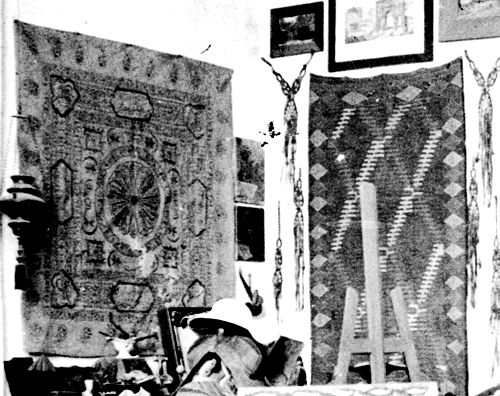Around a year ago I presented a Salon on Rugs in Orientalist paintings
http://turkotek.com/salon_00105/salon.html
One of the objectives of discussion was in trying to ascertain the degree truthfulness of those paintings: were they really drawn “on the spot”, were they reconstructed in the artists’ studios based on sketches or photos from “Oriental” real life, or were they a pure product of fantasy?
One of the artists presented was Giulio Rosati
Giulio Rosati (1858-1917): He studied at San Luca’s academy in Rome in the mid 70s.
Rosati was a prolific painter, well known for his very detailed watercolors.
He used photography as his main source of inspiration together with the accessories he accumulated in his Rome atelier.
Three days ago I received this e-mail:
Dear Mr. Boncompagni, I came across your site concerning oriental rugs in art works because of a search on the Italian artist Giulio Rosati. In 1965 I purchased about 800 stereo glass negatives which were travel photos taken by a wealthy Mexican (I believe he was from there though not certain). For a number of years beginning about 1909 up to the First World War this family traveled through most of Europe, Eastern Europe and North Africa.
To get to my point, when in Rome the photographer of the family visited three artists' studios and made photographs of the artist with some of their works. There are four negatives of Rosati in his studio, or works therein. I thought you might have an interest in seeing them since you did a modest amount of research on this artist.
Of course they are in black and white but still might be of some interest to you.
If you are interested let me know and will make some small scans and send them to via email - as positive images.
Kindest Regards,
Tom Yanul, Chicago
Of course I was curious. I answered affirmatively and Mr. Yanul sent me the scans.
Here is one of them. Half of a stereoscopic negative, to be precise. A little disappointing for me, I was hoping to find in Rosati’s studio some of the rugs visible in his paintings.

The rug on the floor could be a Gandja but I cannot make much of the ones on the wall.
In the meantime Mr. Yanul realized "that Rosati is actually making a watercolor of the man who is taking the photo, namely Alfredo Saldivar. I have about a dozen or more of the family Saldivar group in front of the Sphinx and obviously from what you see Rosati working on is this man sitting on a camel in front of the Sphinx and Great Pyramid ! It’s amazing to me, but as I say I had not gone through these particular negs of the artist (he visits studios of two other Rome artists and takes photos also). The date of the above negs is December 24, 1912."
Then Mr. Yanul sent me another photo

with the following comment:
Filiberto, I went into my other stereos and found the Egypt Sphinx negs, and here is one that is the main man, the person whose picture is being painted by Rosati.
It would appear that Rosati is simply making a colored version of this photo. It’s very close - or there could have been a similar shot that I don't have. You may have noticed that on the easel, to the left, kind of under other papers there is the head of the Sphinx showing, which might be this photo enlarged, from which Rosati is making the painting.
Interesting… and now it’s in color, via the knowledge and/or imagination of Rosati.
Here is a detail of the photo. I tried to make it more readable:

Do you see the photo with the Sphinx’s head to the left of the painting?
So… Mr. Saldivar had a photo of himself taken in front of the Great Pyramid.
When in Rome he gave the photo to Rosati and asked for a painting from it.
When Rosati was working on the painting, he (probably) took a photo of the artist… Now the circle is closed.

We already knew that a lot of painters used photos but I find this casual little discovery quite amusing, isn’t it? I wanted to share it with you.
Many thanks to Mr. Tom Yanul for his kindness and collaboration.
Regards,


